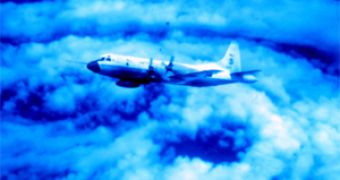There's definitely no need for a reminder of the destructive force of hurricanes, typhoons, or other types of powerful storms. Sadly, especially in the light of the recent tragedies caused by Ike, even children know what such a phenomenon can do. For decades or more, scientists (and not only them) have been dreaming of being able to exploit the raw force of storms and convert it into energy. But until that actually becomes possible, we must still do something in order to prevent or reduce the damage they cause, and it seems someone has found a way.
The winds of a hurricane (or typhoon, or tropical cyclone) have velocities of at least 119 km/h (74 miles per hour), but can sometimes reach even 314 km/h (195 miles per hour). They tend to form a small region of relative calmness and low pressure in the middle of their body, called an eye, which is surrounded by an eyewall of about 16 kilometers (9.9 miles) to 80 kilometers (50 miles) in width, where the strongest of winds and thunderstorms revolve around the center of the storm.
Basically, they transmute the energy they draw from the heat generated by the warm ocean waters into destructive raw kinetic energy in the atmosphere. Recently, an expert from the Ohio-based University of Akron indicated that, contrary to what you might believe, the complexity of these storms makes them very delicate in nature and easy to disrupt. Arkadii I. Leonov, a Professor of Polymer Engineering at the aforementioned institution, together with some of his colleagues, has come up with a patent that could suppress a storm’s ravaging activity by flying supersonic airplanes in circles around its eye in an opposite direction to that of its rotation.
If flying close enough, the planes' sonic boom generates a Shockwave which would highly increase pressure inside the eye of the storm and destroy the upward current of warm air which fuels the storm. According to the scientists, since the sonic boom spreads easily, it only requires a small number of jet planes to get the job done. "Two F-4 jet fighters flying at approximately Mach 1.5 are sufficient to suppress, mitigate and/or destroy a typical sized hurricane/typhoon," their patent application reads, as described by New Scientist.

 14 DAY TRIAL //
14 DAY TRIAL //